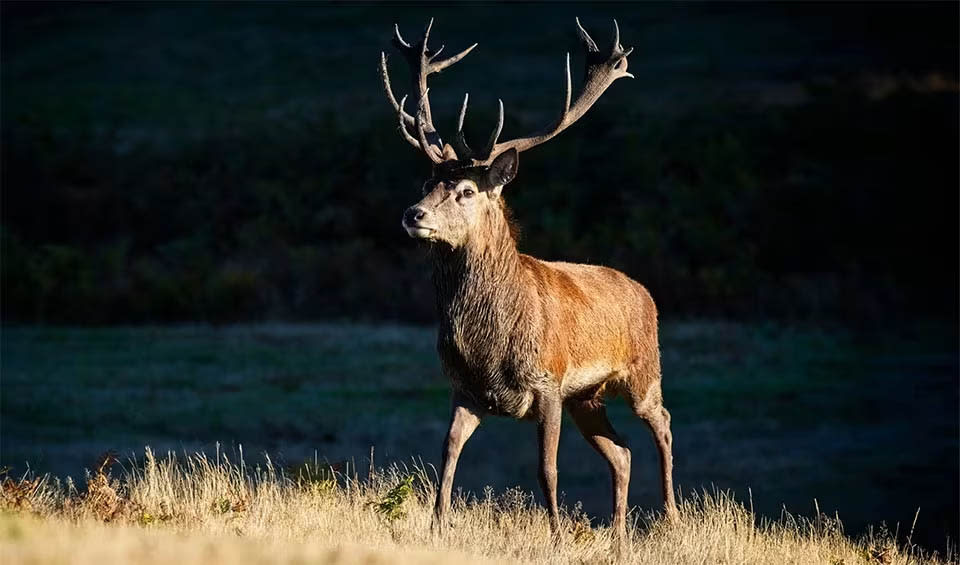They are among the world’s largest and most iconic deer species, renowned for their striking size and cultural importance across Europe, Asia, and North Africa. Male stags, noticeably bigger than female hinds, are instantly recognizable by their impressive antlers, which can span up to a meter in width. These majestic antlers are shed and regrown every year, becoming larger and more elaborate as the deer age. Adding to their appeal is a coat that changes with the seasons, turning thicker and darker in winter—often a grayish-brown with a woolly underlayer for warmth—and then adopting a lighter, reddish-brown hue in the summer.
While red deer can adapt to various habitats, they generally thrive in woodlands featuring open glades alongside moorlands and grasslands where they can easily graze. Historically widespread across vast areas of Europe, parts of Asia, and North Africa, their habitats have diminished and become fragmented due to human encroachment and land development. Nevertheless, these resilient animals have also been introduced to places like Australia and New Zealand for sport hunting and deer farming,
showcasing their adaptability and enduring appeal in new environments.
As herbivores, red deer feed on an assortment of grasses, leaves, bark, and twigs, shifting to sturdier foliage and evergreens during the lean winter months. This seasonal diet is supported by their specialized digestive system: red deer are ruminants, equipped with a multi-chambered stomach that allows them to break down tough plant matter and extract essential nutrients. Their ability to ferment and process fibrous material makes them well-suited to survive in diverse climates and habitats, ensuring that these regal creatures continue to captivate anyone fortunate enough to observe them in the wild.
Distribution
 Albania
Albania Algeria
Algeria Argentina
Argentina Armenia
Armenia Australia
Australia Austria
Austria Azerbaijan
Azerbaijan Belarus
Belarus Belgium
Belgium Bosnia And Herz.
Bosnia And Herz. Bulgaria
Bulgaria Chile
Chile Croatia
Croatia Czechia
Czechia Denmark
Denmark Estonia
Estonia France
France Georgia
Georgia Germany
Germany Greece
Greece Hungary
Hungary Iran
Iran Ireland
Ireland Israel
Israel Italy
Italy Jordan
Jordan Latvia
Latvia Lebanon
Lebanon Lithuania
Lithuania Luxembourg
Luxembourg Moldova
Moldova Montenegro
Montenegro Morocco
Morocco Netherlands
Netherlands New Zealand
New Zealand North Macedonia
North Macedonia Norway
Norway Poland
Poland Romania
Romania Russia
Russia Serbia
Serbia Slovakia
Slovakia Slovenia
Slovenia Sweden
Sweden Switzerland
Switzerland Syria
Syria Tunisia
Tunisia Turkey
Turkey Ukraine
UkraineAnything we've missed?
Help us improve this page by suggesting edits. Glory never dies!
Suggest an editGet to know me
Terrestrial / Aquatic
Altricial / Precocial
Polygamous / Monogamous
Dimorphic (size) / Monomorphic
Active: Diurnal / Nocturnal
Social behavior: Solitary / Pack / Herd
Diet: Carnivore / Herbivore / Omnivore / Piscivorous / Insectivore
Migratory: Yes / No
Domesticated: Yes / No
Dangerous: Yes / No




